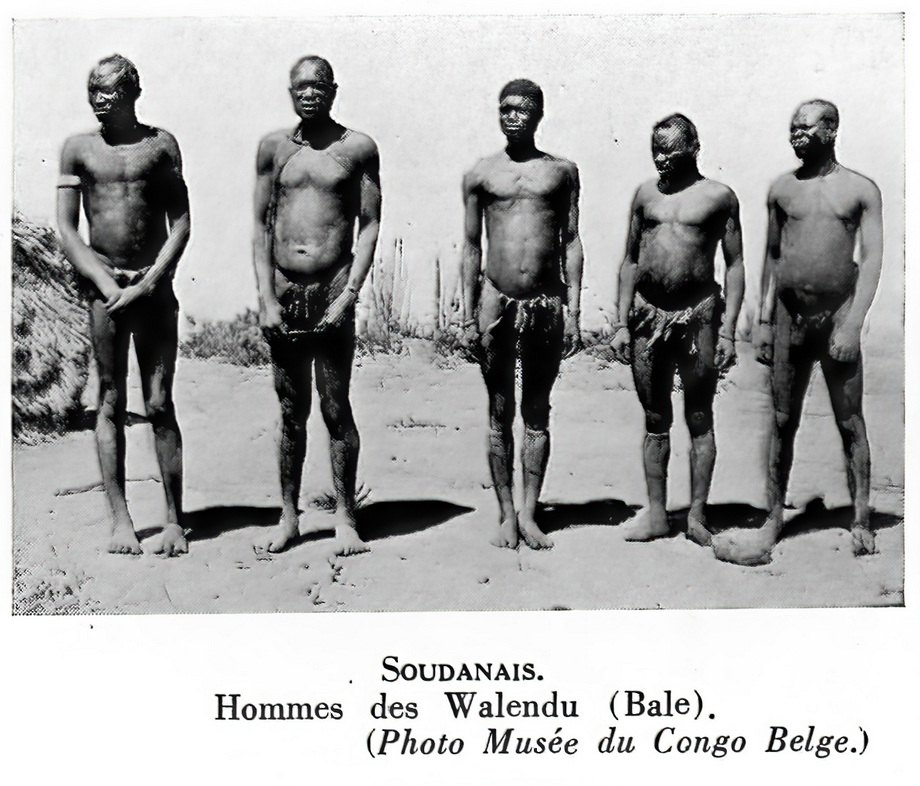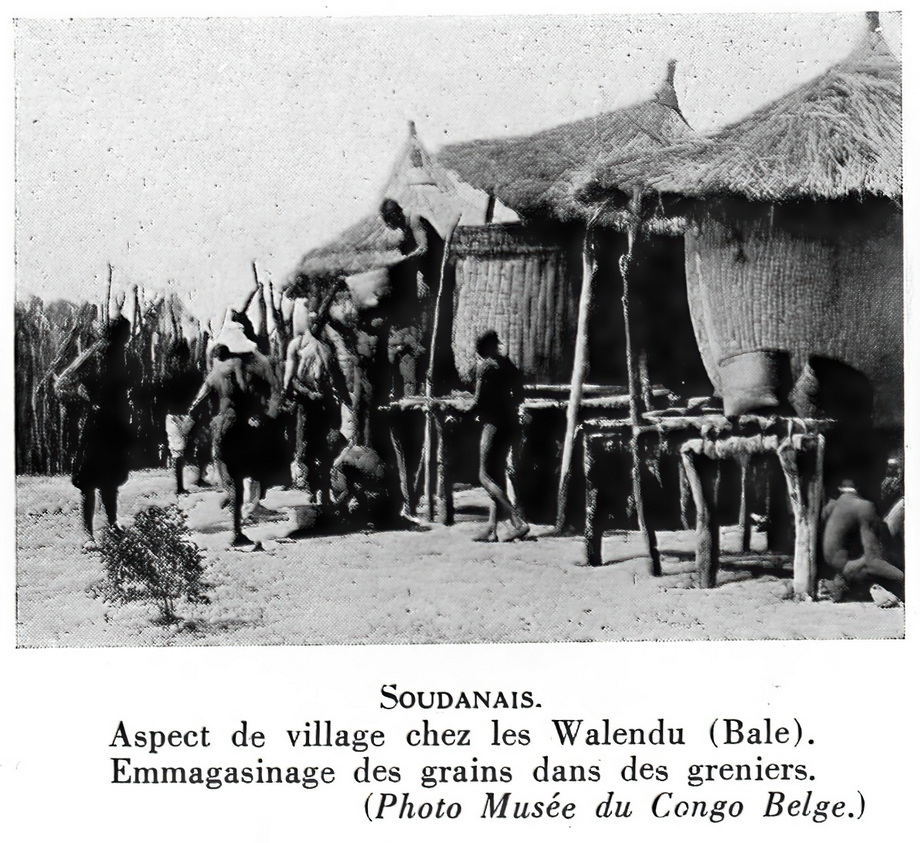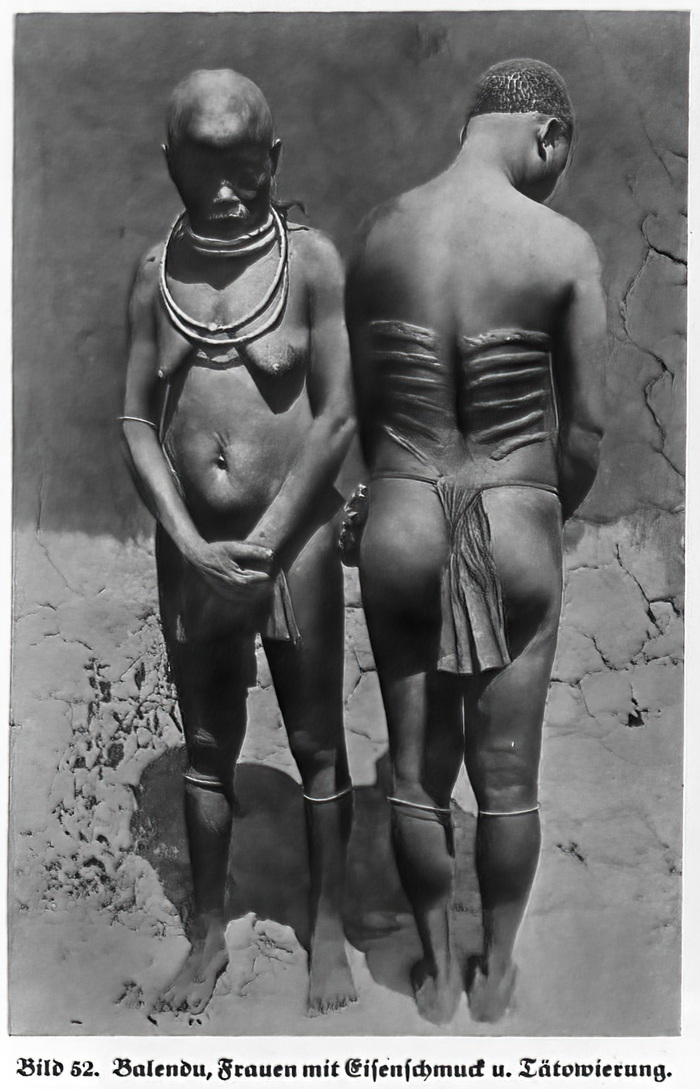

The Balendu (Alendu, Lendu, Palendu, Walendu, Walindu), who are often misnamed Bale, Drugu, or Lega (Babulega, Balega, Malegga, Walega, Walegga), are a tribe of Central Sudanic linguistic stock akin to the Logo, Lugware, Madi, and Moru.
The Lendu people of Democratic Republic of Congo (Kinshasa), are numbering 1,495,000
They are part of the Sudanic people cluster within the Sub-Saharan African affinity bloc.
Globally, this group totals 1,514,000 in 2 countries.
Their primary language is Lendu.
The primary religion practiced by the Lendu is ethnoreligion.

Primarily agricultural, wit.h sorghum and maize the staples, followed by sweet potatoes, eleusine, and beans. Also grown tobacco, gourds, and bananas (important in west, insignificant in east). Animal husbandry is of considerable importance; milk and butter are used.
Two sources report that cattle formerly were kept in considerable numbers later were annihilated by reinderpest; another source found a few herds in the south. Sheep and goats are exceedingly numerous, and dogs (used for hunting) and chickens also are reported. Hunting is a favorite sport.

Men milk and hunt. Both sexes participate in agricultural field work.
Iron hoes are valuable possessions, but there is no native money.
A man's eldest son inherits his house. His livestock and other movables are divided among his sons and brothers. Brothers inherit in default of sons.
The Balendu live in settled villages of irregular plan. Dwellings are huts of beehive shape with roofs thatched in overlapping layers "as though a narrow mat were wound around,"

Soys are circumcised at the age of 7 or 8.
There are local headmen and councils of elders. Succession is patrilineal — by a son; in default of sons, by a brother. Heads of families and subsibs form a council.
Two sources report small autonomous chiefdoms. Another source denies any political integration above the level of petty district chief. Still another source states that there are no paramount chiefs of indigenous stock, but that there are chiefly families of Alur and Hima stock. Another report states that a substantial number of Balendu are ruled by aliens, including Hima on the southwest shore of Lake Albert.
The Lendu had a strong belief in deity known as Guw (god). They practiced traditional religion characterised by offering of sacrifices.
When a new baby is born, the mother would carry the baby and move round the homestead as the local religious leader accompanied her with a flame of fire.
They cycled the homestead three times if the baby was a boy and four times if the baby was a girl. This was done as a way of confirming that the baby was indeed a Lendu and not a child conceived through extramarital affair with a non Lendu fiancé.
If the child’s father was a non Lendu and the mother did not reveal his identity, it was believed that such a child would die after this ritual.
For every new-born child, a shrine was constructed near the door and at the appearance of the new moon, the child was taken to that shrine and fire hoisted above his or her head to prevent demons from attacking the child.
At the beginning of the harvest season, the first harvest was taken to the shrine and offered to the Guw for thanksgiving.
To seek blessings for a person or a child, the parent brought food that elders would eat and sprinkle the water they used for washing hands on that person seeking blessings.
This same ritual was conducted for a girl getting married.
The Lendu viewed marriage as a uniting factor. It was the aunt or the uncle of a boy who identified a bride for him.
The boy had no right to object to any identified girl but rather married her without any complaints when the girl accepted the marriage proposal.
The boy’s family was required to pay dowry of either 12 heads of cattle or granaries of pumpkin before the girl was handed to the bridegroom to consummate their marriage.
Divorce was permissible if the woman turned out to be a witch otherwise a girl already married was not allowed to separate with the husband as culture prohibited refund of dowry.
When a husband dies his brother becomes the next husband of the widow with the expectation that he would look after the orphans.

Sources: